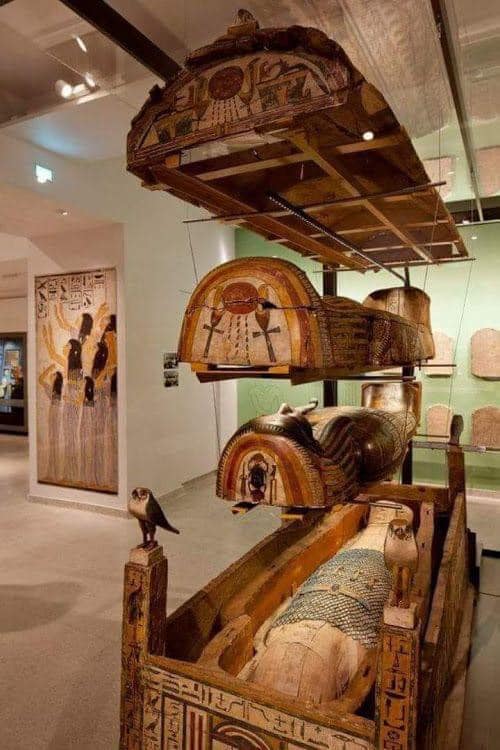A groundbreaking study has finally solved the centuries-old mystery surrounding the death of Takabuti, a renowned 2,600-year-old Egyptian mummy.
Takabuti, believed to be a woman of high social standing, lived in the ancient Egyptian city of Thebes, now known as Luxor. Her remarkably well-preserved mummy has fascinated researchers and historians for nearly two centuries, ever since it was transported to Ireland in 1834 and first unwrapped the following year.

For decades, the cause of her death remained an enigma, sparking numerous theories and speculations. However, recent advancements in technology have enabled a team of experts to uncover the truth behind her tragic demise. Professors Rosalie David of the University of Manchester and Eileen Murphy of Queen’s University Belfast led a meticulous investigation, applying state-of-the-art scientific techniques to analyze her remains. Their research, which involved DNA sequencing, X-ray imaging, CT scans, hair examination, and the study of embalming materials, has provided a detailed and accurate account of what likely transpired in Takabuti’s final moments.
The findings indicate that Takabuti was fatally struck from behind with an axe while attempting to flee—contrary to previous assumptions that she had been killed with a knife. The use of axes as weapons was common in both Assyrian and Egyptian warfare, leading researchers to conclude that her attacker could have belonged to either of these civilizations.
By carefully studying the wound’s depth and location, scientists determined that the assailant wielded the axe with a bent-arm position, generating immense force upon impact. This technique inflicted severe trauma, likely resulting in an almost instantaneous death. Although her passing was undeniably violent, Egyptologist Professor Rosalie David finds some solace in the fact that Takabuti probably did not suffer prolonged agony.
Beyond revealing the circumstances of her death, the study also shed light on Takabuti’s life. Proteomic analysis, which examines proteins in minute fragments of organic material, combined with radiocarbon dating, helped reconstruct key aspects of her existence. CT scan results suggest that she died in her late twenties or early thirties, a relatively young age. Notably, there were no indications of disease or underlying health conditions at the time of her passing.
Further insights were drawn from her ornate coffin, where inscriptions identified her as a married woman. These details provide a glimpse into her social status and the reverence she received in her community. The exceptional preservation of her remains further underscores the care and respect afforded to her after death.
“She was most likely cherished by her loved ones,” Professor Rosalie David noted. “Her body was meticulously prepared—her hair was trimmed neatly, delicately curled, and styled with remarkable precision.”
The culmination of these extensive studies has been documented in a recently published book, Takabuti’s Life and Times in Ancient Egypt: Investigating the Belfast Mummy. This comprehensive work encapsulates years of rigorous research and presents a compelling narrative about both Takabuti and the broader historical context of her era.
Professor Eileen Murphy, co-author of the book, emphasized its significance. “This publication represents the result of countless hours of dedication and scientific inquiry. It not only unravels the mystery of Takabuti’s fate but also offers invaluable insights into the cultural and historical landscape of ancient Egypt during her lifetime.”
Through modern forensic techniques and interdisciplinary research, this remarkable study has provided long-awaited answers to one of ancient Egypt’s most perplexing mysteries. The discovery of Takabuti’s tragic yet swift end offers a poignant reminder of the violence that pervaded her time while also highlighting the deep familial bonds that ensured her careful mummification and lasting legacy.
As science continues to evolve, researchers remain hopeful that similar methodologies will further illuminate the lives and deaths of other ancient figures, bridging the gap between the distant past and present-day understanding. The case of Takabuti stands as a testament to the power of technological advancements in archaeology, proving that even after thousands of years, history still holds secrets waiting to be uncovered.





